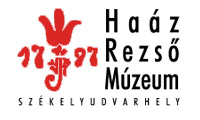Kovács Petronella (szerk.): Isis - Erdélyi magyar restaurátor füzetek 15. (Székelyudvarhely, 2015)
Mester Éva: Az egyszerű geometrikus elosztású ablakok védelme és megőrzésük fontossága
clothing remains recovered were in a rather misshapen, fragmentary and incomplete state. The silk lisere fabric of the bodice had many layers of lining and was decorated with bobbin lace. The material investigation proved that the skirt was made of silk velvet. The silver-gilt metalthread embroidery was presumably part of the decoration of an apron. The dry textile finds can be easily damaged if they are suddenly immersed into water. Thus the fragments of the wear of Erzsébet Batthyány were conditioned by the help of Sympatex semi-permeable membrane before the cleaning treatment started. Thereafter the textiles were soaked in soft water with non ionic surfactant and then they were rinsed three times in soft water. After this process it was possible to rearrange the threads of the fabrics, which were fixed with stainless insect pins, during the entire drying process. After that it was necessary to overview the 17th century European costume history. That was the only chance to find analogue pieces of the corset-bodice, by the help of which to define the ‘original’ location of the fragments, and to reconstruct the cutting pattern of the object. Fortunately after close observation of the surviving fragments, it could be ascertained that the attire represented the ‘Hungarian’ type characteristics of the age. After the cleaning and reshaping of the fragments, the cut of the bodice could be reconstructed, as could that of the skirt. During the restoration the remains of the bodice were sewn between two layers of crepeline. Where the original textile was incomplete, silk fabric coloured brown was substituted; this also served as supporting material for the undecorated parts. That silk layer was put between the textile layers of the corset-bodice for consolidation as a conservation treatment and after that it was sewn between two crepelines. The corset-bodice fragments were fragile, so they couldn’t be exhibited on a dummy, thus they had to be kept in plane state. The remains of the velvet skirt were fastened to acid-free cardboard covered with cotton fabric and were then covered with crepeline. Traslated by: Eszter Szatmáriné Bakonyi Eszter Lili Fa Conservation of a Byzantine type manuscript made in the 16th century The Serbians settled in the Hungarian Kingdom’s territory, next to the Danube during the 16-17th centuries. The settlers not only brought books with them, but also reproduced and bound new ones. The treated book originally belonged to the old Cyrillic liturgical book collection of the Greek Orthodox Church of Adony, than it was taken to the King Saint Stephen Museum, Székesfehérvár in 1913. The book shows typical Byzantine characteristics, the manuscript and the original binding were made at the same time. The aim of the conservation was to make the book usable (readable, presentable) and to prevent further degradation, bearing in mind the principle of minimal intervention and reversibility during the treatment. Therefore the text block and the cover were kept together during conservation, although the possibility of separating them aroused. Hungarian book-collections keep very limited amount of Byzantine book bindings, so the artistic and historical value of the fragmentary volume discussed is unique, which justified the minimal intervention. To keep the traces of the bookbinding structure and the original sewing had priority during the conservation work. Without separating the binding and the text block the aqueous treatment of the paper was impossible. Paper leaves were contaminated mainly around the edges, their inner areas were intact. The bottom part of the text block suffered moisture and mould damage, therefore the sizing has lost and the paper became sleazy. The resizing of the leaves was necessary before starting the refilling up the missing comer areas of the paper. 2% of Klucel G (hydroxypropylcellulose) solved in ethanol worked best for sizing the leaves. Curling, waving and forming water stains were avoidable with it. The reinforced paper edges than were suitable for refillment and lining where necessary. There was not possible to make hand leaf casting on the bound paper, so the refills were made of dyed cellulose fibres on suction table in advance, and then dried and glued to the original. After repairing the text block, head and fore edges were retouched slightly to the original red colour. The book was stored by standing on its bottom edge as normal in Europe, so the moisture damaged the bottom edge and dissolved the red colour from it. This information connects to the history of the book, therefore the author decided not to do retouching on this area. The broken comers of the wooden board were repaired with a mixture of epoxy resin and sawdust. On the leather book-cover high amount of disturbing, 2-3 mm in diameter insect holes were noticeable, these were filled with a mixture of leather fibres and starch paste and retouched with aquarelle paint. The reconstructions of clasps were made of brass and three leather strips fixed with flat braid, based on analogue pieces. For the storing of the conserved book acid free box was made. Inside the box a hard cover folder keeps the book stable, and this folder can also be used as reading support and installation. The book was digitized parallel to the conservation, so the digital version is advisable for searching and reading. Traslated by: Katalin Orosz Éva Mester Protection of windows w ith simple geometric subdivision, and the importance of their preservation The fashion of the stained glass windows was always created by the current public opinion and public taste; and it was inseparable from the current architectural styles. 107
